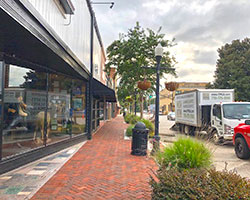FY 2022 Awarded Projects

A total of nine Transportation Alternatives (TA) Program grants totaling over $4.5 million were awarded for the development of multi-use trails, sidewalk improvements, bicycle, and pedestrian facilities, and streetscape improvements across Georgia.
View Awarded Projects